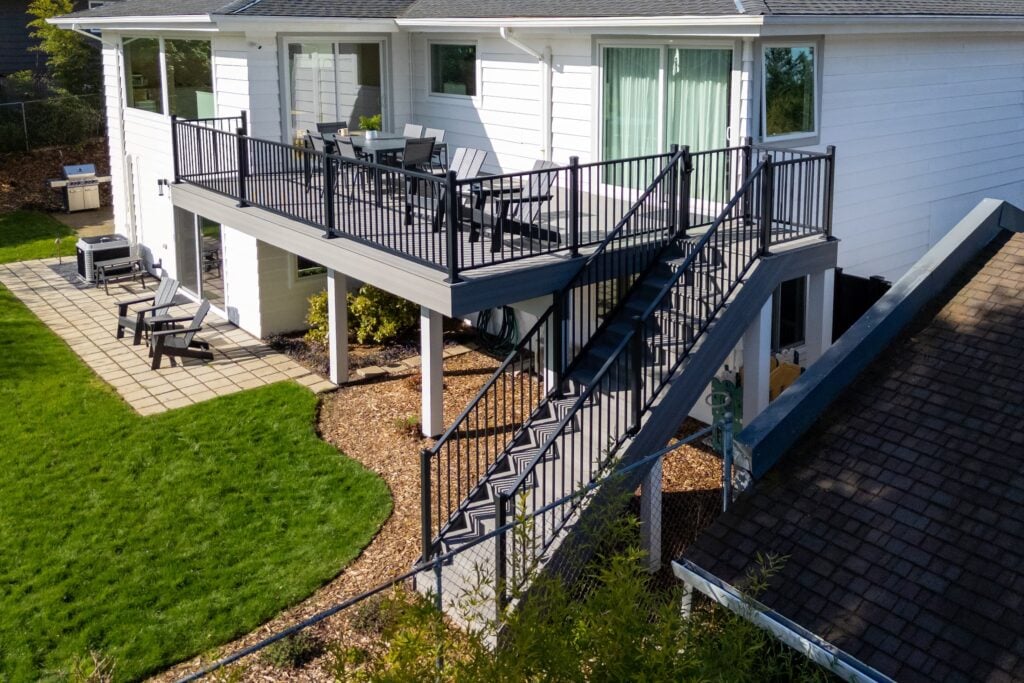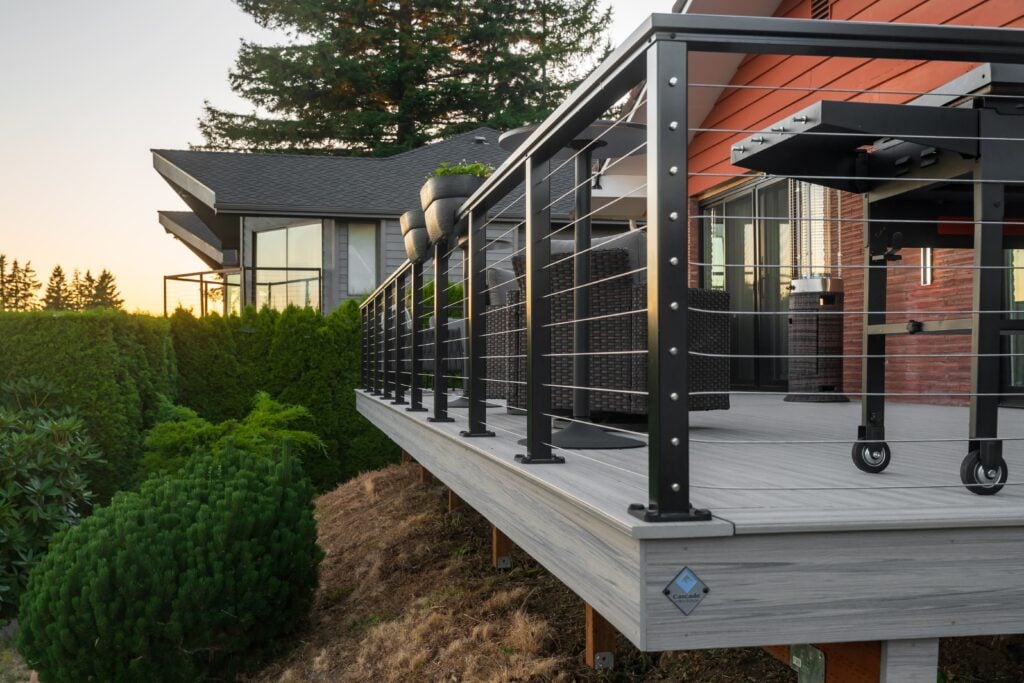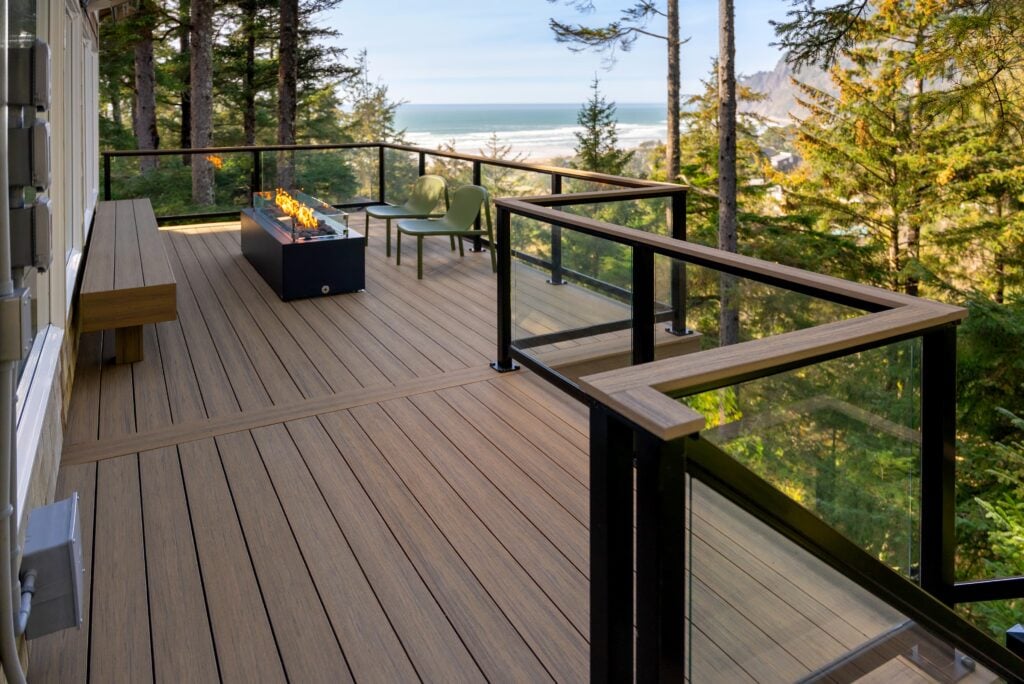At Cascade Fence and Deck, our goal is to build decks that fit how people actually live. The railing you choose should match your lifestyle, not just your Pinterest board. Whether you need safety for kids, a clear view of the mountains, or less maintenance each year, the right railing can make a big difference.
In the video above, we walk through the three main types of railing we install, picket, cable, and glass. It also explains what each offers for your space, budget, and day to day use.
Picket Railing

If you’re tired of painting or staining wood every year, steel picket railing is a simple, low-maintenance upgrade.
Key points:
No painting, staining, or rusting
Just rinse occasionally to clean
Available in black, bronze, and white (black is most popular)
Keeps your view open with narrow vertical lines
Picket railing adds structure without closing in your view. We’ve also seen it offer strong safety for families with kids.
“We really liked the cable railing at first,” one customer said, “but with small kids, it would’ve been easy for them to climb. We went with black aluminum railings instead, and it was a good call. The kids are already climbing the first section, so going vertical instead of horizontal was the right choice.”
Specs:
Up to 6 ft between posts
Meets the 4-inch sphere rule (no gaps larger than 4 inches)
Cable Railing

For a clean, open look without the upkeep of glass, cable railing works well. It gives you visibility while staying durable and low-profile.
We install Decorators® cable systems that use cables tensioned across 4-foot spans, spaced 3 inches apart. A vertical spindle in the center prevents sagging.
“Our old wood railing made the deck feel closed in,” a customer said. “Now with the new railing, it feels like we’re in our backyard again. We can see Mount Hood and all the trees from here.”
Key points:
Keeps sightlines open
Modern, simple look
Needs tightening about every 2–3 years
Specs:
4-foot max span between posts
Passes the 4-inch sphere rule
Glass Railing

If you want the clearest possible view, glass railing is the way to go. It’s made with tempered safety glass for strength and weather resistance.
Two main types:
Framed glass railing – has top and bottom rails (often used for cocktail rail setups).
Frameless glass railing – uses minimal posts for a wide-open view.
Key points:
Best for panoramic views
Acts as a windbreak
Modern appearance
Maintenance: Frameless glass needs more cleaning, especially in the Pacific Northwest. Use warm soapy water, rinse, and squeegee dry to avoid mineral spots.
Specs:
Up to 5 ft between posts
Meets the 4-inch sphere rule
Add-Ons
A railing can do more than define your deck’s edge. Small upgrades can make it more functional.
Cocktail Rail: Flat top rail made from deck boards. Holds drinks, planters, or phones.
Railing Lights: Improves safety and visibility after dark.
Extended High Posts: Lets you hang string lights without extra poles.
Summary
Each railing type serves a different need:
Picket railing = low maintenance and safe for families
Cable railing = modern, open, and durable
Glass railing = clear views and a wind barrier
At Cascade Fence and Deck, we build every railing to meet local codes and safety standards, including the 4-inch sphere rule.
